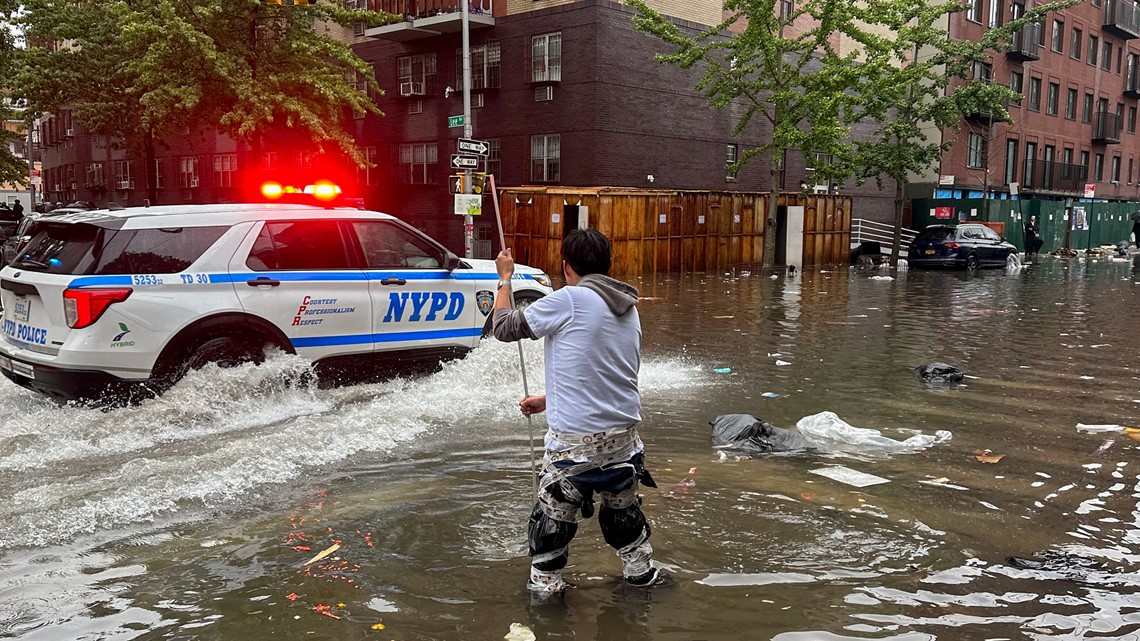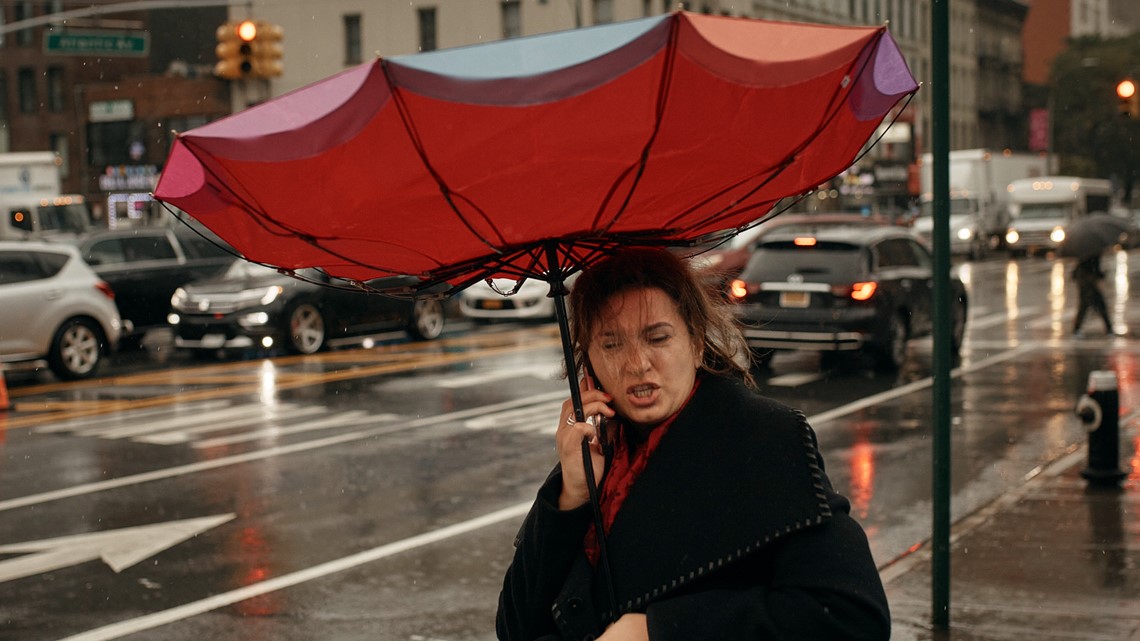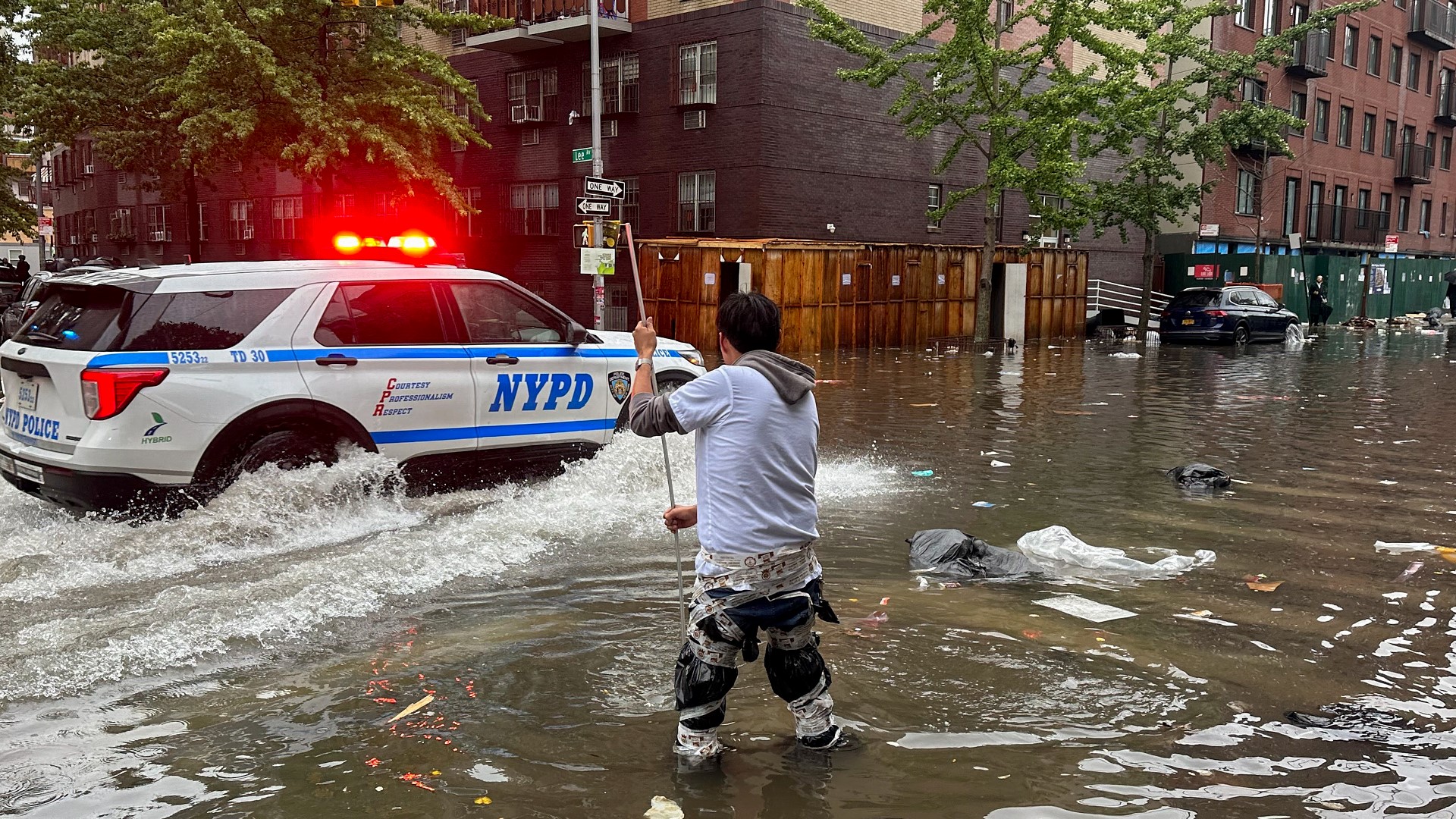NEW YORK — Rain walloped the New York metropolitan area with a startling punch Friday, knocking out several subway and commuter rail lines, stranding drivers on highways, flooding basements and shuttering a terminal at LaGuardia Airport in one of the city's wettest days in decades.
As much as 6.7 inches (17 cm) of rain had fallen in parts of Brooklyn by midday, with at least one spot seeing 2.5 inches (6 centimeters) in a single hour, according to weather and city officials. The 6 inches (15 cm) of rain at John F. Kennedy Airport surpassed a record set during Hurricane Donna in September 1960, the National Weather Service said.
And more downpours were expected.
The deluge came two years after the remnants of Hurricane Ida dumped record-breaking rain on the Northeast and killed at least 13 people in New York City, mostly in flooded basement apartments. Although no deaths or severe injuries have been reported so far from Friday's storm, it stirred frightening memories for some residents.
Ida killed three of of Joy Wong's neighbors, including a toddler. And on Friday, water began lapping against the front door of her building in Woodside, Queens.
“I was so worried,” she said. It became too dangerous to leave: “Outside was like a lake, like an ocean."
Within minutes, the building's basement flooded again, with water rising nearly to the ceiling. After the family's deaths in 2021, the basement was turned into a recreation room. It is now destroyed.
City officials said they received reports that six basement apartments that flooded Friday, but all the occupants got out safely.
Gov. Kathy Hochul and Mayor Eric Adams declared states of emergency and urged people to stay put if possible. But schools were open, students went to class and many adults went to work, only to find themselves wondering how they would get home.


Virtually every subway line was at least partly suspended, rerouted or running with delays. The Metro-North commuter railroad was suspended, the Long Island Rail Road was snarled, and even bus service was severely disrupted, according to transit officials.
“When it stops the buses, you know it’s bad,” high school student Malachi Clark said as he stared at a flooded Brooklyn intersection while trying to figure out how to get home. He had tried to take a bus, then a subway. School buses were running, but they transport only a fraction of public school students, many of them disabled.
Traffic hit a standstill on a stretch of the FDR Drive, a major artery along the east side of Manhattan. With water having risen above cars’ tires, some drivers abandoned their vehicles.
At around 11 a.m., Priscilla Fontallio said she had been in her car, which was on a piece of the highway that wasn't flooded but wasn't moving, for three hours.
“Never seen anything like this in my life,” she said.
On a street in Brooklyn's South Williamsburg neighborhood, workers were up to their knees in water as they tried to unclog a storm drain while cardboard and other debris floated by. Some people arranged milk crates and wooden boards to cross the flooded sidewalks.
Flights into LaGuardia were briefly halted Friday morning, and then delayed, because of water in the airport’s refueling area. Flooding also forced the closure of one of the airport’s three terminals. Roughly a quarter of flights at LaGuardia were cancelled, as were 13% at Kennedy.
A Brooklyn school was evacuated because its boiler was smoking, possibly because water had gotten into it, Schools Chancellor David Banks said at a news briefing. At the Central Park Zoo, which was closed because of the weather, the sea lion pool got so full that one of the animals swam out and looked around for a bit before returning to the pool on her own, zoo officials said in a statement.
The rain also led to the postponement of Friday night's preseason game between the New York Rangers and New York Islanders on Long Island. It will be played Saturday night instead.
In Brooklyn's Crown Heights section, Jessie Lawrence said she awoke to the sound of rain dripping from the ceiling of her fourth-floor apartment. She set out a bowl to catch the drips but heard strange sounds outside her door.
“I opened my front door, and the water was coming in thicker and louder,” pouring into the hallway and flowing down the stairs, she said. Rain had pooled on the roof and was leaking through a skylight.


National Weather Service meteorologist Dominic Ramunni said Friday’s deluge stemmed from a coastal storm, with low pressure off the East Coast helping to bring in some deep moisture from the Atlantic Ocean.
Hoboken, New Jersey, and other cities and towns around New York City also experienced flooding. New Jersey Gov. Phil Murphy called state offices to close at 3 p.m., except for essential personnel.
The deluge came less than three months after a storm caused deadly floods in New York's Hudson Valley and left Vermont's capital, Montpelier, submerged.
Hochul, the New York governor, had warned New Yorkers on Thursday night of a forecast that called for 2-3 inches (5-7.5 centimeters) of rain, with 5 inches (13 centimeters) or more possible in some places.
“We anticipate, we warn, we prepare. But then when it hits and you have 5 inches in the last 12 hours — 3 in the last hour this morning — that’s a scale that we’re not accustomed to dealing with,” the Democrat told TV station NY1 on Friday, adding that New Yorkers had better get used to it because of climate change.
As the planet warms, storms are forming in a hotter atmosphere, making extreme rainfall more frequent, according to atmospheric scientists.
___
Associated Press writers Deepti Hajela and Karen Matthews in New York and Anthony Izaguirre in Albany contributed.

